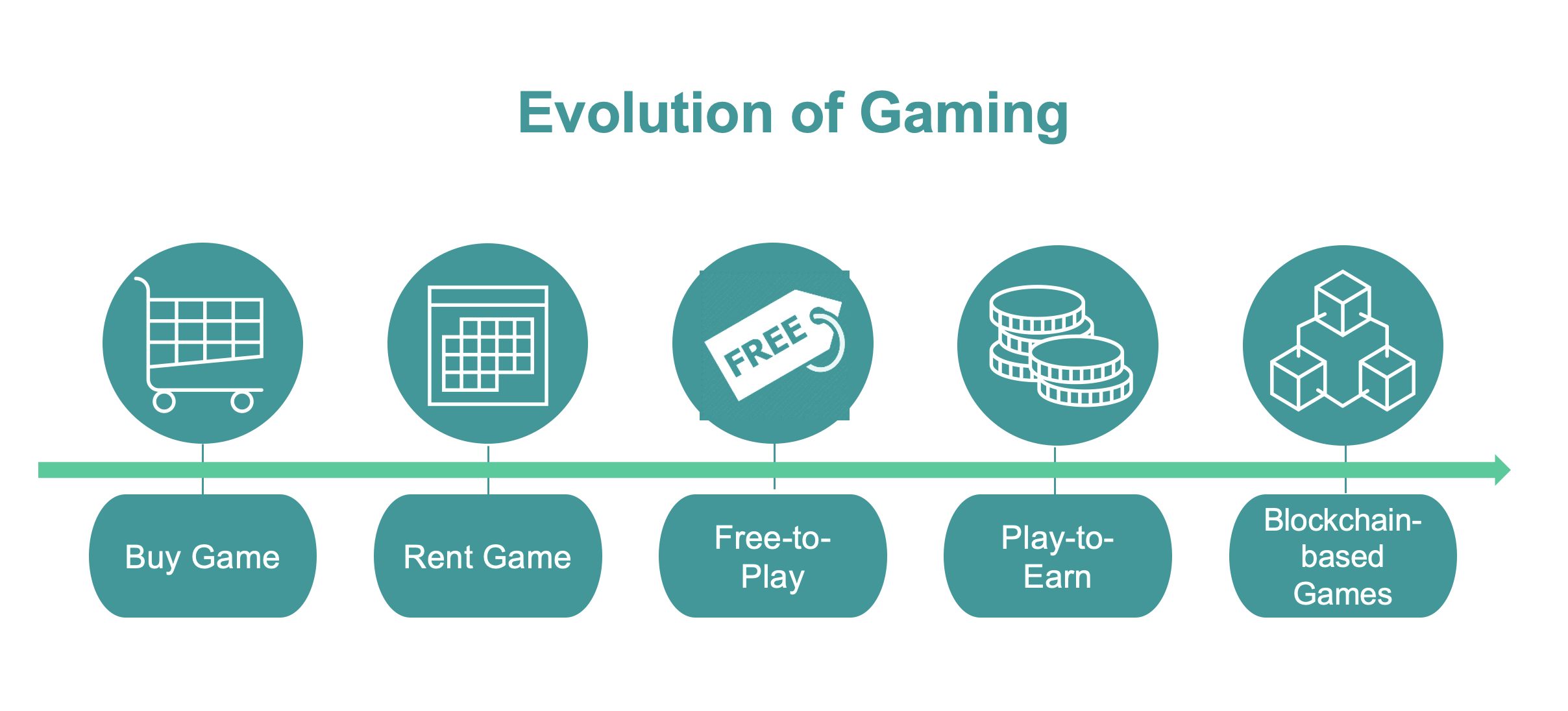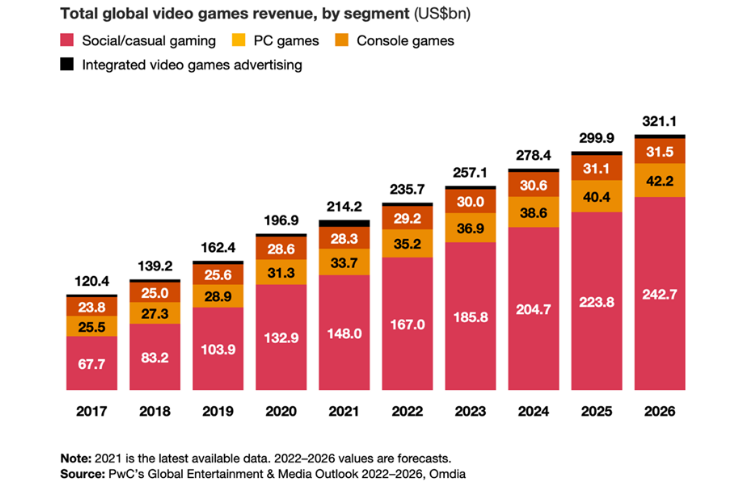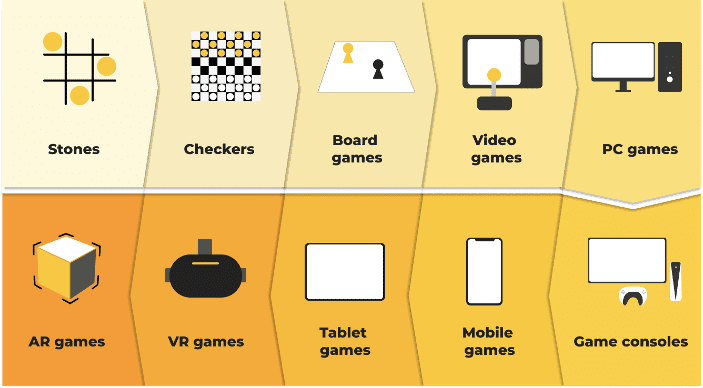The Evolution of Online Gaming: A Look at the Landscape in 2025
Related Articles: The Evolution of Online Gaming: A Look at the Landscape in 2025
Introduction
In this auspicious occasion, we are delighted to delve into the intriguing topic related to The Evolution of Online Gaming: A Look at the Landscape in 2025. Let’s weave interesting information and offer fresh perspectives to the readers.
Table of Content
The Evolution of Online Gaming: A Look at the Landscape in 2025

The world of online gaming has undergone a dramatic transformation since its inception. From rudimentary text-based games to immersive virtual worlds, the industry has consistently pushed technological boundaries. As we stand on the cusp of 2025, it is evident that the evolution continues, with advancements in artificial intelligence, virtual reality, and cloud computing poised to reshape the gaming landscape.
The Rise of the Cloud and the Demise of Downloads?
One of the most significant shifts in the gaming industry is the rise of cloud gaming. This technology allows players to stream games directly to their devices without the need for downloads or high-end hardware. This has opened up gaming to a wider audience, eliminating barriers related to device limitations and storage space.
Cloud gaming platforms offer a subscription-based model, providing access to a vast library of games for a monthly fee. This model is becoming increasingly popular, offering players a cost-effective and convenient way to enjoy a wide variety of titles. While the initial focus of cloud gaming was on casual and mobile games, the technology has advanced to the point where it can handle demanding AAA titles.
The emergence of cloud gaming is likely to have a significant impact on the traditional download-based model. While downloadable games will likely continue to exist, the convenience and accessibility of cloud gaming may lead to a decline in their popularity.
The Convergence of Virtual and Augmented Reality
Virtual reality (VR) and augmented reality (AR) technologies have been slowly gaining traction in the gaming industry, offering immersive experiences that blur the lines between the real and virtual worlds. In 2025, these technologies are poised to become mainstream, with advancements in hardware and software driving adoption.
VR games offer a truly immersive experience, allowing players to step into virtual worlds and interact with their surroundings in a way that was previously unimaginable. AR games, on the other hand, overlay digital elements onto the real world, creating a blended experience that enhances the player’s environment.
The convergence of VR and AR technologies is opening up new possibilities for game developers. Games can now be designed to seamlessly transition between virtual and augmented reality, offering players a truly unique and engaging experience. This convergence is also driving innovation in game design, with developers exploring new ways to utilize these technologies to create compelling narratives and gameplay mechanics.
The Growing Influence of Artificial Intelligence
Artificial intelligence (AI) is playing an increasingly important role in the gaming industry. AI-powered game characters are becoming more intelligent and realistic, providing players with more challenging and engaging opponents. AI is also being used to personalize gameplay, tailoring the difficulty and content to the player’s preferences and skill level.
AI is also revolutionizing game development. AI-powered tools are being used to automate tasks such as level design and character animation, freeing up developers to focus on creativity and innovation. This increased efficiency is allowing developers to create more complex and immersive games, pushing the boundaries of what is possible in the gaming industry.
The Socialization of Gaming
Online gaming has always been a social activity, but the rise of social media and streaming platforms has further amplified this aspect. Players can now connect with friends and fellow gamers around the world, sharing their experiences and competing in online tournaments.
The integration of social media into games is blurring the lines between gaming and social networking. Games are becoming platforms for social interaction, allowing players to build relationships and communities around shared interests. This trend is expected to continue in 2025, with games becoming even more integrated with social media platforms and online communities.
The Future of Free-to-Play Games
The free-to-play model has become increasingly popular in recent years, offering players access to games without upfront costs. While this model has been criticized for its reliance on microtransactions, it has also opened up gaming to a wider audience, making it more accessible to players who may not be able to afford traditional paid games.
In 2025, free-to-play games are expected to continue to evolve, with developers finding new ways to monetize their games without alienating players. The focus will likely shift from predatory microtransactions to more player-friendly systems that reward players for their time and effort.
A Look at the Future: The Rise of Esports
Esports, the competitive side of video gaming, has exploded in popularity in recent years. With professional players competing for large prize pools and sponsorships, esports has become a major force in the entertainment industry.
In 2025, esports is expected to continue its rapid growth, with new leagues and tournaments emerging across the globe. The rise of cloud gaming and VR/AR technologies will also have a significant impact on esports, creating new opportunities for competition and entertainment.
FAQs: Addressing Common Questions
Q: Will cloud gaming completely replace traditional gaming?
A: While cloud gaming is gaining popularity, it is unlikely to completely replace traditional gaming in the near future. Downloadable games offer benefits such as offline play and ownership of the game files. However, cloud gaming’s convenience and accessibility will likely lead to a shift in the market, with more players opting for subscription-based services.
Q: What are the benefits of VR and AR in gaming?
A: VR and AR offer immersive experiences that enhance gameplay and create new possibilities for game design. VR allows players to step into virtual worlds, while AR overlays digital elements onto the real world, blurring the lines between reality and fiction.
Q: How is AI changing the gaming industry?
A: AI is enhancing game characters, personalizing gameplay, and automating game development tasks. This allows for more intelligent and realistic opponents, tailored game experiences, and increased efficiency in the development process.
Q: What are the challenges facing the free-to-play model?
A: The free-to-play model faces criticism for its reliance on microtransactions, which can be predatory and lead to imbalances in gameplay. However, developers are finding new ways to monetize games without alienating players, focusing on rewarding players for their time and effort.
Q: What is the future of esports?
A: Esports is expected to continue its rapid growth in 2025, with new leagues and tournaments emerging globally. The rise of cloud gaming and VR/AR technologies will create new opportunities for competition and entertainment within the esports scene.
Tips for Navigating the Future of Gaming
- Embrace the cloud: Explore cloud gaming platforms and experience the convenience and accessibility they offer.
- Experiment with VR and AR: Try out VR and AR games to experience the immersive future of gaming.
- Stay informed about AI: Follow the latest developments in AI and how it is shaping the gaming industry.
- Support responsible free-to-play games: Choose games that offer fair and rewarding gameplay experiences.
- Explore the world of esports: Watch esports tournaments and engage with the competitive gaming community.
Conclusion: A Bright Future for Gaming
The future of gaming is bright, with advancements in technology and evolving player preferences driving innovation and growth. From the rise of cloud gaming to the convergence of VR and AR, the industry is constantly pushing boundaries and redefining what is possible. By embracing these advancements and staying informed about the latest trends, players can ensure they are well-equipped to navigate the exciting future of online gaming.








Closure
Thus, we hope this article has provided valuable insights into The Evolution of Online Gaming: A Look at the Landscape in 2025. We hope you find this article informative and beneficial. See you in our next article!